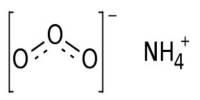A Thermal Conductivity Detector (TCD) is a gas chromatography detector that detects and analyzes various components of a gas sample. It is also known as a katharometer, and it is a bulk property and chemical-specific detector that is widely used in gas chromatography. This detector detects changes in column eluent thermal conductivity and compares them to a carrier gas reference flow. It is based on the idea that various gases transfer heat differently.
Because most compounds have significantly lower thermal conductivity than the typical carrier gases helium or hydrogen, when an analyte elutes from the column, the effluent thermal conductivity is lowered, resulting in a detectible signal.
Here’s how it works:
- Column: In gas chromatography, the sample is injected into a column where the separation of components occurs. This column is usually packed with a stationary phase or consists of a capillary coated with a stationary phase.
- Carrier Gas: A carrier gas, typically helium or nitrogen, is used to carry the sample through the column.
- Thermal Conductivity Cell: The effluent from the column enters the thermal conductivity cell. This cell contains a heated filament or wire that serves as a temperature sensor. The carrier gas and sample components flow over this wire.
- Temperature Difference: As different components pass over the heated wire, they cause a change in the wire’s temperature. This temperature change is due to differences in thermal conductivity between the carrier gas and the sample components. The wire’s resistance changes in response to this temperature change.
- Bridge Circuit: The TCD has a bridge circuit that monitors resistance changes in the wire induced by temperature fluctuations. This produces an electrical signal that is proportional to the concentration of the sample components.
Thermal conductivity detectors are well-known for their ease of use, durability, and broad range of applications. They are commonly used to analyze permanent gases such as hydrogen, nitrogen, oxygen, carbon dioxide, noble gases, and light hydrocarbons. However, they are less sensitive than other detectors, such as flame ionization detectors (FID) and electron capture detectors (ECD), making them unsuitable for trace analysis.
















